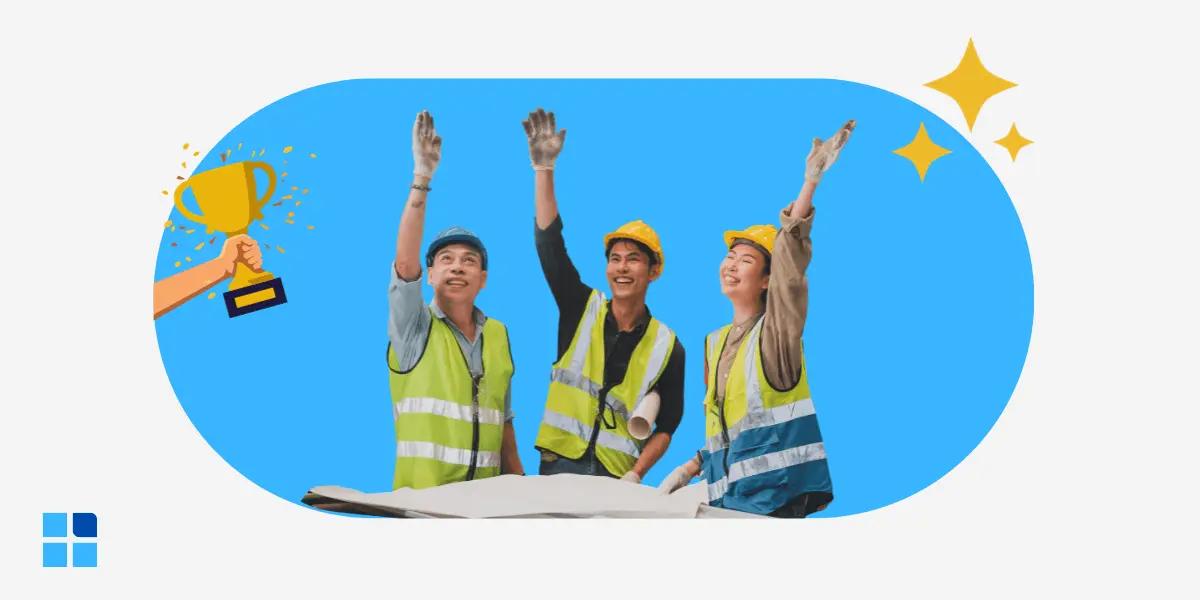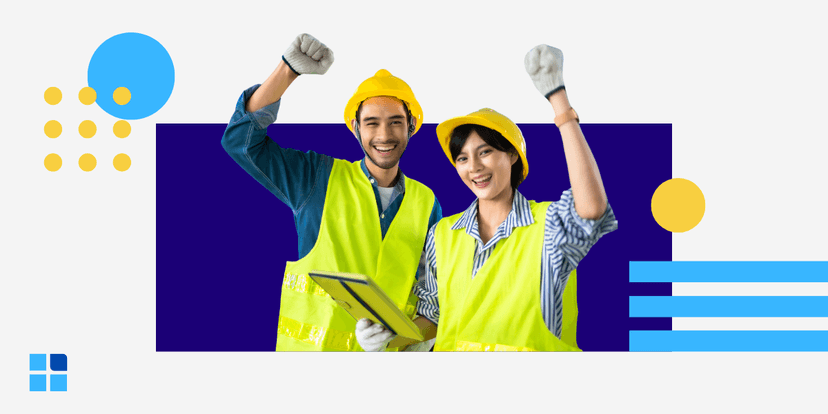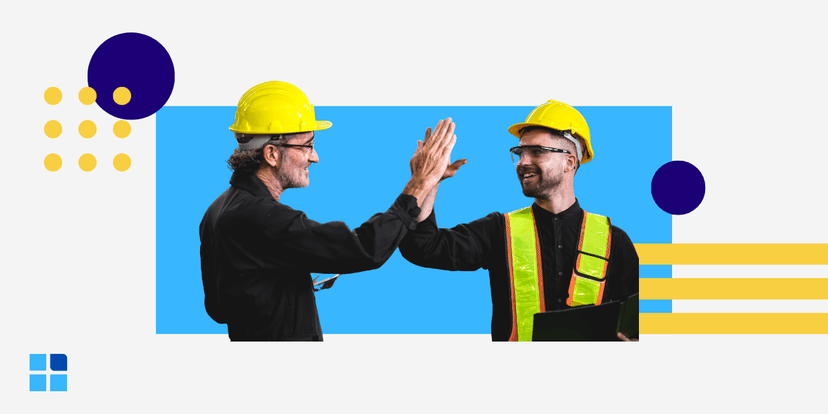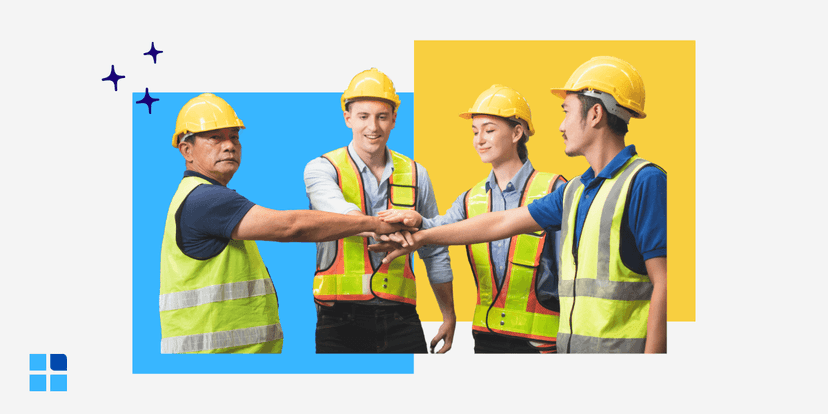Let's be honest, finding and keeping great people on your team is tougher than ever these days. A good pay check is important, but it's often not enough to make your best employees stick around for the long haul. So, what's the secret sauce? More and more, it comes down to having a great employee rewards plan. Understanding the different types of employee rewards is your first step to creating a workplace where people genuinely feel happy, motivated, and appreciated.
Think of a good rewards program as more than just a company expense; it’s a huge part of your company’s personality and a powerful way to keep your team engaged and doing their best work. This guide will walk you through the six main kinds of rewards, helping you build a strategy that your team will love.
What exactly are employee rewards?
Before we jump into the different kinds, let's quickly break down what "employee rewards" even means. Simply put, an employee rewards program is just your company's way of saying "thank you" and recognizing people for their hard work, big wins, and positive attitudes. This could be a reward for hitting a sales target, finishing a huge project, or just being a great team player who lives and breathes the company's values.
The whole point of rewarding employees is to encourage more of the good stuff. When people see that their hard work gets noticed and appreciated, it's a huge boost to their employee motivation. This naturally leads to them being more involved, more productive, and much less likely to look for a job elsewhere.
A great recognition program isn't just about handing out gift cards. Instead, it's about strategically appreciating employees so they feel valued, seen, and respected. Understanding the various types of employee rewards is fundamental to achieving this.
The 6 essential types of employee rewards
When it comes to rewards, it's definitely not a one-size-fits-all deal.
A truly effective strategy mixes and matches different reward types because everyone on your team is different. Some people are driven by money, others by public praise, and still others by having more control over their workday. A robust employee recognition program acknowledges these differences.
By offering a variety of rewards, you ensure there's something motivating for every type of employee. Let's dive into the six main types of employee rewards you should know about.

1. Intrinsic rewards
First up are intrinsic rewards, which might be one of the most powerful types of employee rewards of all. You can't really hand these to someone in a box. Intrinsic rewards are the good feelings that come from within. It’s that sense of pride, accomplishment, and purpose an employee gets from doing their job well.
While you can't directly give this feeling, you can absolutely create a work environment where it happens all the time. For many people, this feeling is what keeps them engaged and loyal year after year, and it’s key to long-term employee satisfaction.
When an employee feels like their work matters and that they're part of something bigger, that's an intrinsic reward in action. It's a super powerful, and cost-effective, way to build a team that truly cares.
Here’s how you can help these good feelings grow:
- A sense of accomplishment: Give people projects that are challenging but not impossible, so they can feel that amazing "I did it!" moment.
- Personal and professional growth: Let them learn! Offer chances to take courses, learn new skills, or attend workshops.
- Autonomy and trust: Don't micromanage. Trust your employees to own their work and decide how to get it done.
- Meaningful work: Connect the dots for them. Show them how their specific job helps the whole company succeed.
- A simple "thank you": Regularly praise people for their hard work. A specific, genuine compliment can go a long way.
2. Extrinsic rewards
Next, we have extrinsic rewards. These are the complete opposite of intrinsic ones. They are the tangible, external things you give to employees. This is what most of us think of when we hear "employee rewards." They are things like bonuses, gifts, or promotions that the company gives to say "great job." These are the classic tangible rewards that serve as physical proof of a job well done and provide clear, visible employee recognition.
In short, extrinsic rewards are fantastic for hitting specific, short-term goals and sparking a little friendly competition. They send a clear message that the company is paying attention and is happy to share its success. This category includes money, but it also covers a lot of other non-cash perks. A well-rounded employee reward system uses a mix of both intrinsic and extrinsic rewards to keep everyone motivated.
Common examples include:
- Salary and wages: The basic, foundational reward for any job.
- Bonuses and promotions: Classic rewards for amazing work or for taking on more responsibility.
- Gifts and merchandise: Fun stuff like company swag, new tech, or other physical gifts.
- Awards and trophies: A public way to celebrate top performers.
- Extra time off: Who doesn't love an extra paid day off?
3. Monetary rewards
Let's talk money. Monetary rewards are a type of extrinsic reward that, you guessed it, involves cash or has a direct dollar value. For most people, financial incentives are a big deal because they offer real, practical benefits. Cash bonuses and raises are the classic examples here, and everyone understands the value they bring.
But a good rewards program is smart about how it uses money. While cash is a great motivator, relying on it too much can sometimes backfire. It can create a culture where people only go the extra mile if there’s a dollar sign attached. A better approach is to use monetary rewards to celebrate huge wins and major milestones. That way, the reward feels special and earned, not just expected.
Here are the most common monetary rewards:
- Cash bonuses: A one-time cash payment for hitting a specific goal.
- Salary increases: A permanent pay bump for consistently great work.
- Profit-sharing: A program where employees get a slice of the company's profits.
- Stock options: Giving employees a small piece of the company, so everyone wins when the company grows.
- Gift cards: A flexible reward that lets employees choose their own treat.
- Referral bonuses: A cash "thank you" for bringing another great person to the team.
4. Non-monetary rewards
Just as important are non-monetary rewards. These are the perks that don't have a price tag but can be incredibly valuable for boosting morale, improving work-life balance, and strengthening your company culture. Honestly, these are often the rewards people remember and talk about the most. They show that the company cares about its people as human beings, not just as workers.
Creating a positive work environment often relies more on these non-monetary rewards than anything else. In fact, many people today, especially younger folks, really value things like flexibility and growth opportunities over a small cash bonus. Plus, these types of rewards are a great way for any company, big or small, to show appreciation without breaking the bank. They prove that saying "thank you" is about more than just money.
Here are some great non-monetary rewards to consider:
- Flexible schedules: The freedom to work from home, choose your own hours, or have a compressed work week.
- Public shout-outs: A simple mention in a company-wide email or meeting can mean the world.
- Growth opportunities: Sponsoring an employee for a conference or a special training course.
- Extra paid time off (PTO): An extra vacation day or a "recharge day" after a tough project.
- Office upgrades: A comfy new chair, a second monitor, or even the best parking spot.
- Cool projects: Letting someone work on a project they're really passionate about.
- Team lunches: Celebrating a team win with a free meal is a classic for a reason.
5. Employee incentives
You might hear "reward" and "incentive" used to mean the same thing, but there's a small difference. Rewards are usually a "thank you" for something that's already happened. Employee incentives are set up beforehand to get people motivated to hit a future goal. An incentive basically says, "If you can achieve X, you will get Y."
Incentive programs are amazing for getting the whole team focused on one specific goal, whether that's boosting sales, improving workplace safety, or launching a new product on time. They work best when the goal is super clear and achievable. The whole idea is to use the incentive to encourage specific positive behaviors you want to see.
Common employee incentives include:
- Sales commissions: A percentage of the sales an employee brings in.
- Goal-based bonuses: A bonus that's promised ahead of time for hitting a specific target.
- Incentive trips: An all-expenses-paid trip for top performers is a huge motivator!
- Fun and games: Using leaderboards and points to make hitting targets more fun.
- Innovation bonuses: Offering a special reward for a great idea that saves the company money or makes things better.
6. Wellness-based rewards
Last but not least, we have wellness-based rewards, which are becoming more and more important. Smart companies know that their employees' health and happiness are everything.
Burnout is real, so companies are fighting back by investing in their team's physical, mental, and even financial health. These rewards show you care on a deeper level.They are all about helping employees manage stress, stay healthy, and find a good work-life balance.
When a company offers these benefits, it sends a powerful message: "We care about you, the person, not just you, the employee." This creates a supportive culture where people feel safe and cared for.
Examples of wellness rewards include:
- Gym memberships: Helping pay for a gym membership or fitness classes.
- Mental health support: Offering subscriptions to apps like Calm or Headspace, or providing access to therapy.
- Wellness stipends: A set amount of money employees can use on whatever helps them stay well, like new sneakers or a massage.
- Financial wellness help: Workshops on budgeting or saving for the future.
- A healthy office: Stocking the kitchen with healthy snacks, providing comfy desks, and having quiet spaces to relax.
- Giving back: Matching donations to a charity or offering paid time off to volunteer is great for the soul.
How to build an effective employee reward system
Knowing the types of employee rewards is the first step. Now, how do you put it all together into effective employee recognition programs? Here's a simple game plan:
- Know your goal. Before you do anything, figure out what you're trying to achieve. Are you trying to improve retention, boost sales, or encourage more teamwork? Your goal will help you pick the right rewards.
- Match your vibe. Your rewards program should feel like your company. If one of your core company values is collaboration, focus on team-based rewards. When your program aligns with your culture, it feels authentic.
- Mix it up. This is the golden rule. Use a blend of all six types of employee rewards to make sure there's something for everyone. The best employee reward system offers variety and, when possible, choice.
- Keep it fair and transparent. The rules of the game should be clear to everyone. Make sure people understand how rewards are earned. If the process seems biased, it can do more harm than good.
- Just ask! The easiest way to know what your employees want? Ask them! A quick, anonymous survey or a few informal chats can give you amazing ideas and make employees feel even more valued.
Frequently asked questions (FAQ)
Q1: So, what's the best type of employee reward to give?
When looking at the different types of employee rewards, there's no single "best" one. It totally depends on the person, your company culture, and what you're trying to achieve. A new grad might love a training opportunity (non-monetary rewards), while a parent might prefer cash bonuses (monetary rewards). The best strategy is to offer a diverse mix of rewards and let people choose when you can.
Q2: How often should we be rewarding employees?
Think of it in two parts. Small, informal employee recognition (like a "great job" or a public shout-out) should happen all the time, even daily. It keeps morale high. Bigger extrinsic rewards, like bonuses, should be tied to bigger accomplishments, like yearly reviews or finishing a major project.
Q3: We're a small company. Can we even afford a rewards program?
You bet! Some of the most powerful rewards don't cost a dime. Public praise, flexible hours, and showing you trust your team are all intrinsic and non-monetary rewards that have a massive impact on creating a positive work environment.
Q4: What's the difference between a reward and a bonus?
Good question! Think of "employee rewards" as the big umbrella category that covers everything. A bonus is just one type of reward, it's always a monetary incentive. But a reward can also be a day off, a cool project, or a simple thank you.
Conclusion: The power of strategic appreciation
At the end of the day, great businesses are built by people who feel motivated and appreciated. By understanding and using all six key types of employee rewards (the internal good feelings, the external stuff, cash, non-cash perks, incentives, and wellness support) you can create a company culture that people want to be a part of. But managing all of this can feel like a lot of work. How do you track great ideas and reward them fairly?
That's where you can leverage technology to make things simple. A platform like LeanSuite’s Suggestion Platform, for instance, is an idea management system that also has a built-in recognition and rewards system. It’s based on a points system, so when an employee shares a valuable idea or demonstrates positive behaviors, you can instantly reward them. Employees can then use those points to redeem prizes they actually want from the Marketplace (a prize catalogue that you can curate to be unique to your workforce). This connects their contributions directly to tangible rewards, making the whole process of appreciating employees seamless and fun.
A smart employee reward system isn't just another cost; it's an investment in your most valuable asset: your people. And when you consistently focus on recognizing employees, you'll create a cycle of great work, high employee satisfaction, and lasting loyalty that will help your company thrive for years to come.







